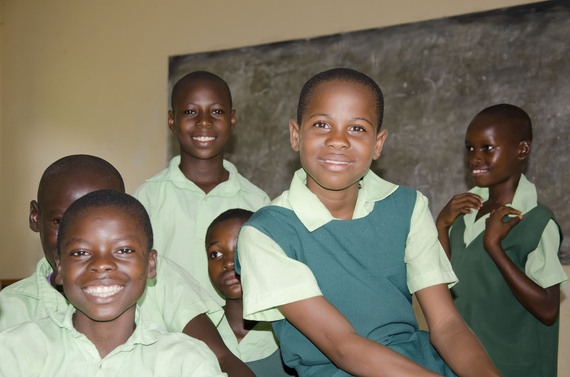The latest global out-of-school numbers are out and the story they tell is familiar.
- While significant progress was made at reducing exclusion from basic education in the beginning of the millennium, the last seven years have seen progress slow significantly;
- Disparities still persist, especially for girls and those in conflict-affected regions; and
- Youth are much more likely to be out of school than children of primary age.
Stagnation
In keeping with the unacceptable trend of recent years, the numbers once again crept upwards instead of declining for primary school children. In the last 4 years, we've seen these out-of-school children estimates go from 57 million in 2011, to 58 million in 2012, to 59 million in 2013, finally to 61 million in 2014. Population growth is given as one reason, however the full picture shows funding and subsequently progress on universal primary education clearly stagnating.
From 2000 to 2007, this picture looked very different. Rates of exclusion from both primary and lower secondary school dropped dramatically, from 15 to 10 percent and from 25 to 18 percent, respectively. However, in the following seven years these rates managed to decline only by an additional one to two percent. The out-of-school rate for primary school in 2014 stood at 9 percent, and for lower secondary school it was 16 percent, or roughly 60 million adolescents.
Girl and those in conflict-affected areas still likely to be left out
Gaps in equity persist at regional and country levels in gender, despite global averages that show similar participation rates among girls and boys. Sub-Saharan Africa continues to be the region with the worst gender disparities with 23 percent of all girls out of school -- 9 million girls are expected never to be able to go to school, and 6 million boys. Around the world, girls currently out-of-school continue to be less likely than boys to ever receive an education. UIS data estimates that 15 million out-of-school girls will never enter a classroom, compared to 10 million boys.
Those in conflict-affected countries are also at a serious at a disadvantage. Not only were 35 percent of primary age out-of-school children living in 32 conflict-affected countries in 2014, but difficulties in collecting education data for refugees and internally displaced children suggest that those numbers could be far higher. In Western Asia, 89 percent of children and adolescents out of school are living in countries affected by armed violence.
What better data reveals: upper secondary numbers
To make the new promises of the SDG targets a reality, UIS is working with countries to develop new methodologies and better data on access, learning and equity at all levels. More precise targeting of policy and resources to address the gaps above depends on this data.
In this vein, for the first time, UIS and GEM have included upper secondary out-of-school numbers. A total of 142 million of 15 to 17 year olds are estimated to be out of school according to the new data. Perhaps unsurprisingly, the number of adolescents excluded from upper secondary school is much higher than those out of primary school. In Southern Asia, these youths are eight times more likely to be out of school than primary school aged children in the region.
In many countries, upper secondary school is not compulsory and especially in poorer contexts many adolescents may leave school to join the labor market. However, the new report points out that many of these youths were of primary school age at a time when many more were excluded from primary school access. In 2005, 75 million primary school aged children were not in school. As a result, many of these adolescents today, have never been in school at all. Now they have entered adulthood and the labor market with few options.
Looking ahead to the Education Commission's report
These new figures reflect both the failures of the past and a prediction of what we can expect more of without new funding -- in particular for the new Education Cannot Wait fund for education in emergencies to which new donors are being encouraged to contribute at the UN General Assembly in September. A seriously renewed commitment to target the most marginalized including girls and those in conflict-affected countries is also desperately needed. While we continually need better data, the data released today shows the damage of under-investment and weak political will very clearly.
To this end, the International Commission on Financing Education Opportunity was launched last year to further the already compelling case for investment in education to reach all children by 2030 and reverse the decline in global education financing. The final report of the Commission will be released on 18 September during the UN General Assembly.
As an early conversation on the anticipated Education Commission report highlighted -- education access and quality between now and 2030 will determine whether the defining trends of this century -- technological, economic and demographic -- will create opportunity and prosperity for all or deepen and further entrench inequality and instability.
Let's not forget we failed to achieve MDG2 for exactly those children and communities most likely to be left behind again. The MDG target on universal primary education believed to be achievable in 2000 has now quietly been pushed out another 15 years. We failed, so we gave ourselves more time. We cannot afford to do that again.
If policy-makers and finance ministers cannot be compelled by the reality of one child, born into poverty and unable to realize a happy and healthy future through access to quality learning, may they have a fire lit under them by the evidence and data revolution more broadly which shows today that at least 263 million children, adolescents and youth are adrift, many in fragile and violent contexts.
The future will be determined by what we make possible for these children and youth.

